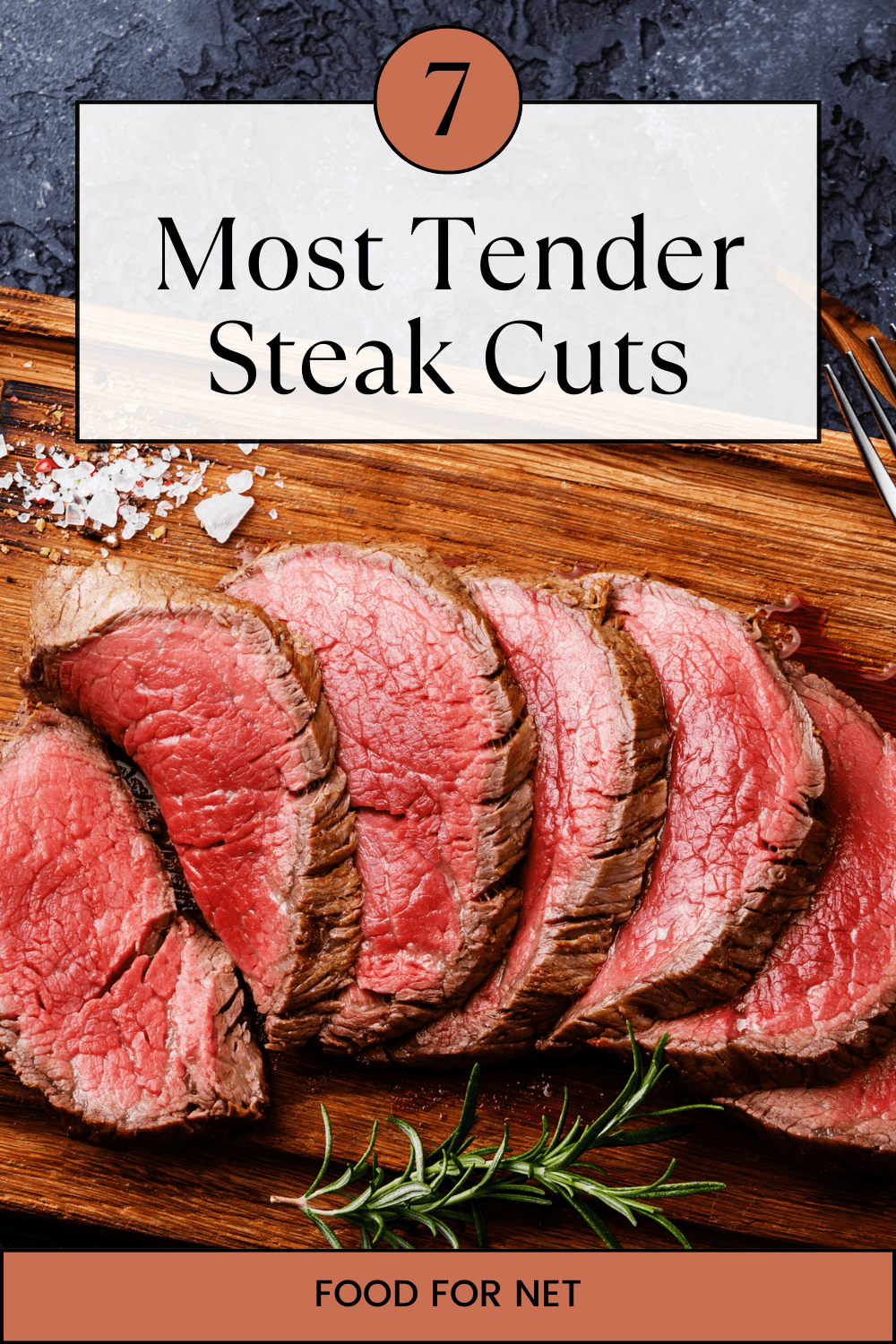
Steak is one of the most popular ways to enjoy beef. It’s a classic dish that’s famous all over the world, and with different cuts and methods of cooking, steak lovers can enjoy a variety of flavors every time they dine at their favorite steakhouse. The most tender steak cuts may cost a little more, but they are often worth it, especially if you cook them correctly.
Personally, I love all types of steak. Even chewy, tough, cheap steak slathered in barbecue sauce.. My wife, however, can’t stand anything but the most tender, flavorful steaks. So I wanted to do some research to find the most tender cuts of steak out there!
If there’s one thing any steak fan knows, it’s that there are many different cuts in a cow that can be used to make a steak. And because they come from different parts of the cow’s body, they end up having different flavors and textures from one another. Some cuts have soft and tender muscles that melt in your mouth, while other cuts are known for their toughness and leanness.
If you’re new to the whole steak-eating hobby, or you just want to try out some tender steak for yourself, then you’ve come to the right place. We’ve listed some of the most popular cuts found in beef and ranked them in order of tenderness (from least to most tender), so you can get an idea of what’s good and what’s not in that regard.
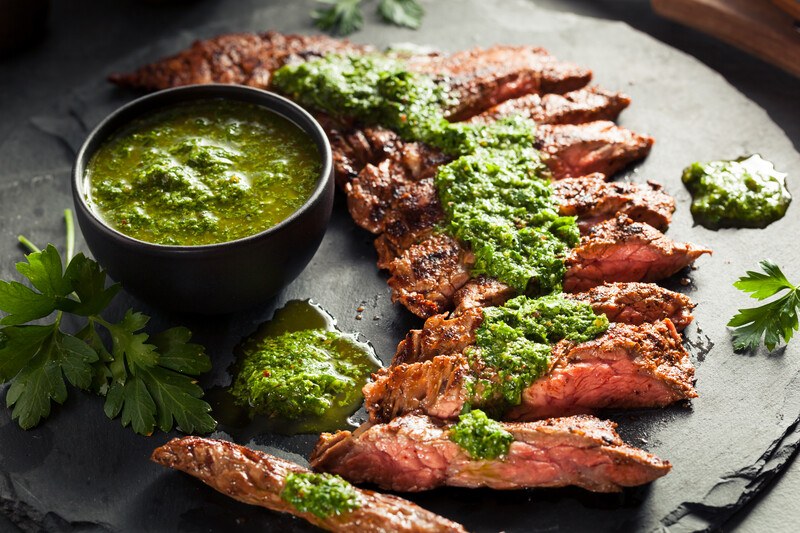
And if you love steak, I recommend trying one of these steak of the month clubs. Why? A lot of times the meat you get from places like SaveMart or other big grocery stores is factory farmed and not the highest quality.
Steak of the month clubs are well known for having access to the best meats, from the best farms, and they deliver it to your door. You can often choose your cuts (or you can even be surprised!), and there’s always deals on bulk orders if you have a freezer and want to get a discount.
Most Tender Steak Cuts (With Pictures!)
Skirt Steak
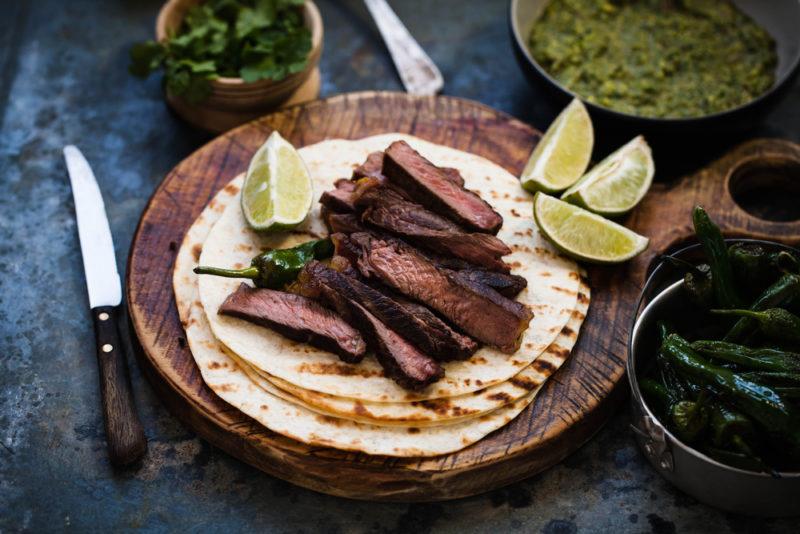
Starting off this list is, to put it nicely, one of the tougher steak cuts on the market. The skirt steak is taken from the diaphragm of the cow (particularly the diaphragm muscle that’s attached to the cow’s 6th and 12th ribs). Both the inside and outside skirt steak varieties come from this area of muscle. It’s also the steak that usually gets confused with flank steak, which is found elsewhere.
One of the defining features of skirt steak is its extreme toughness. The steak is actually covered in a tough membrane that will make the finished product really difficult to eat. It’s recommended that you remove this membrane before cooking to prevent that from happening. Other than its toughness, though, skirt steak actually tastes pretty good. It can be used in many dishes, including Chinese stir fry, fajitas, and Cornish pasties.
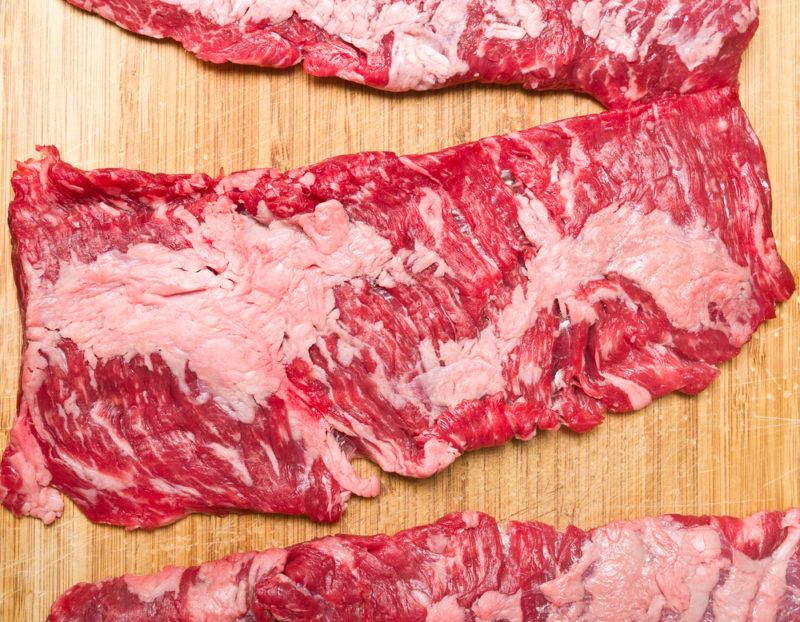
One workaround that people use to minimize toughness in skirt steak is by marinating the steak before cooking. That way, it not only becomes easier to eat, but more flavorful as well. Other workarounds include slow cooking, pan-searing quickly, or even braising. It can also be sliced in a way that makes it easy to eat.
Top Sirloin Steak
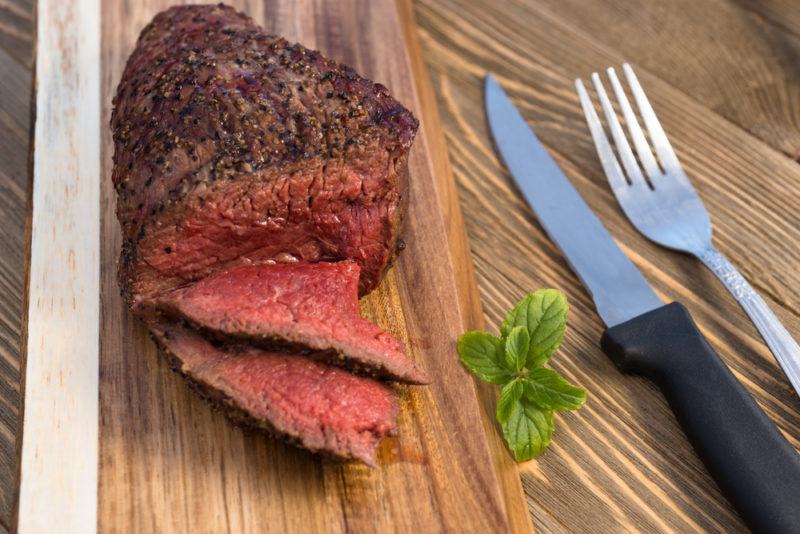
Sirloin steak is one of the most popular cuts of beef, mainly due to its flexibility as well as its affordability. Coming from the back top of the cow, the sirloin steak is actually a category of steak in its own right, with T-bones, porterhouses, top sirloin, tender sirloin, and more belonging to the group. We’ll be focusing on top sirloin for now, though.
Top sirloin is one of the more affordable cuts among the sirloin steaks. It’s a sirloin steak that has the bone, tenderloin, and bottom muscles taken out. This leaves a steak comprised of both the gluteus medius and biceps femoris, the two remaining muscle groups in the steak.

While top sirloin steak is found really close to the prized tenderloin steak (which we will talk about later), it’s not particularly tender itself. This is because the muscles in the top sirloin steak are actually used quite a bit, and any steak enthusiast will tell you that the more a muscle is used, the tougher it becomes when eaten.
Sirloin is used in many different recipes and is served grilled, pan-fried, broiled, or sautéed. If you plan on buying some top sirloin of your own, it’ll cost you around $5.99 to $7.99 per pound in the U.S.
Round Steak
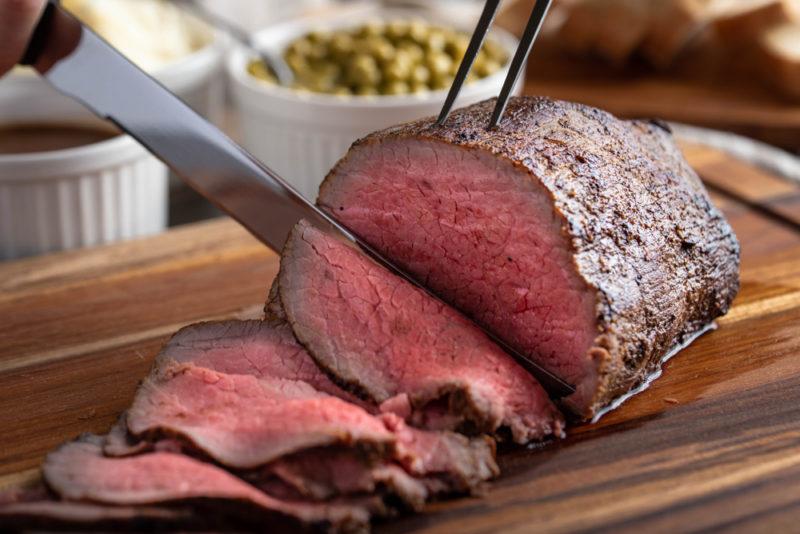
Round steak is a moderately tough cut of beef. It’s taken from the hind leg portion of the cow, behind the sirloin and flank steaks and above the shank steak. Round steak can be divided further into more specific cuts as well, with each varying in texture.
There are top, bottom, and eye round steaks, which are found in different parts of the round steak itself. You can buy them with or without the femur, the bone that’s connected to the round steak. Occasionally, you’ll also find that the cut may come with the sirloin tip, or “knuckle” as it’s also known as.
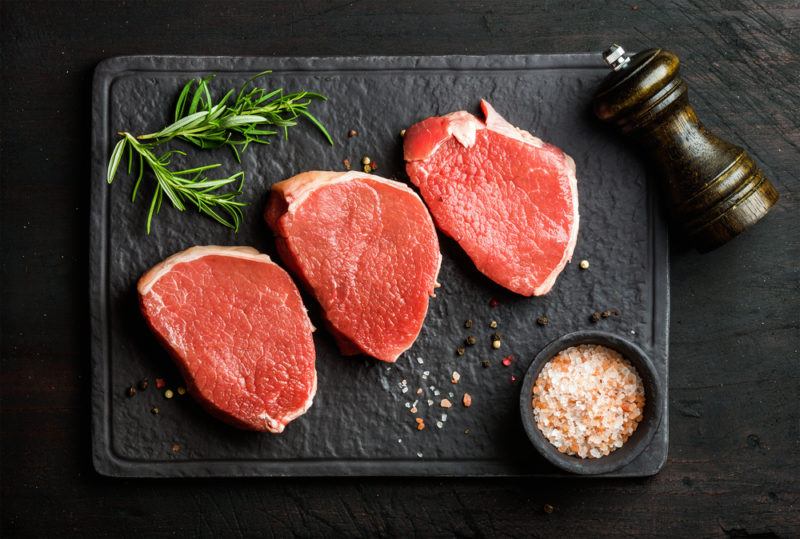
While it isn’t very tender, round steak has found massive popularity when cut as rump cover. Rump cover is a special cut that’s made up of round, rump, and loin steaks, and is prized among many South American countries, especially in places such as Brazil and Argentina. Generally, though, round steak has found use as a slice of meat to make smoked beef jerky.
Flank Steak
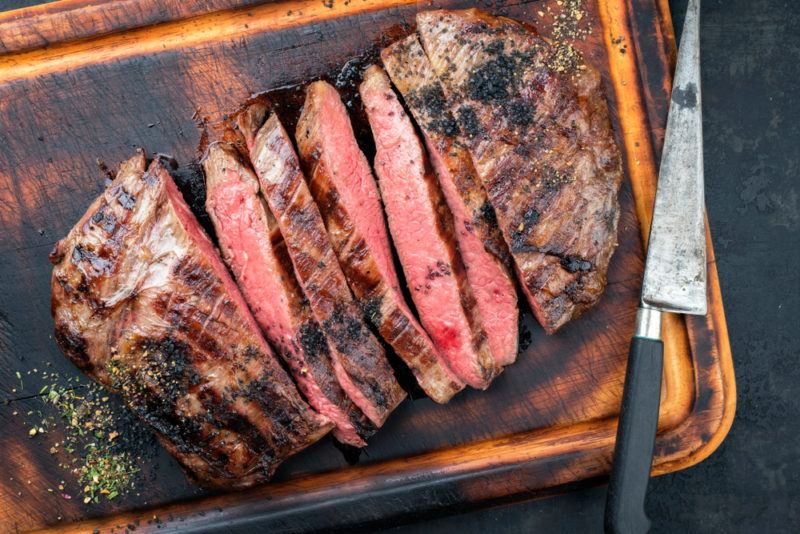
Flank steak is a cut that, as mentioned earlier, seems similar to the skirt steak. While both cuts are thin and lean, the flank steak has a few different traits from the skirt. It’s a moderately tough cut that can be found in the abdominal muscles of the cow.
Another key trait of flank steak is the presence of grain (or muscle fiber) in the cut. Chefs usually deal with the grain by cutting across it to minimize the toughness of the cut.
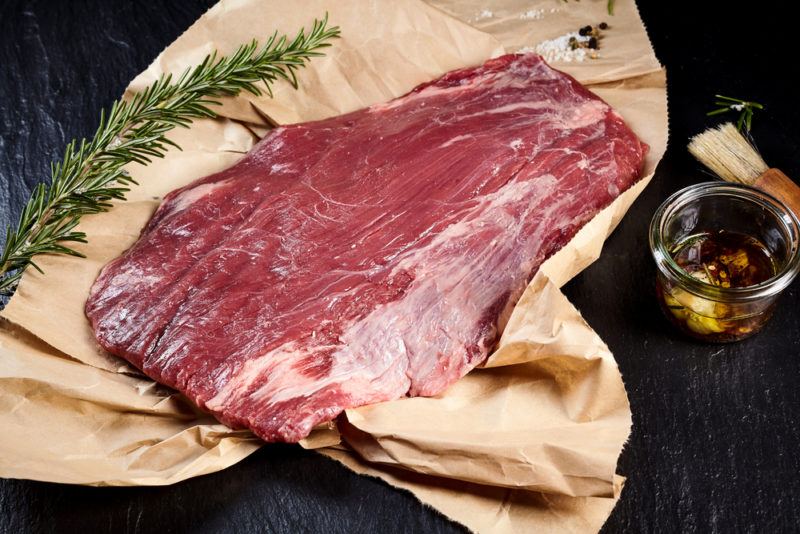
As it is similar to skirt steak in some rights, flank steak is used sometimes as an alternative to skirt steak in dishes that require the latter, such as fajitas. It’s also a common cut in Asian markets, being sold as “stir-fry beef”. The French use it in medium-rare steak, and Colombia, in particular, has it as a common cut in the market, referred to as sobrebarriga, or “over the belly”.
T-Bone Steak
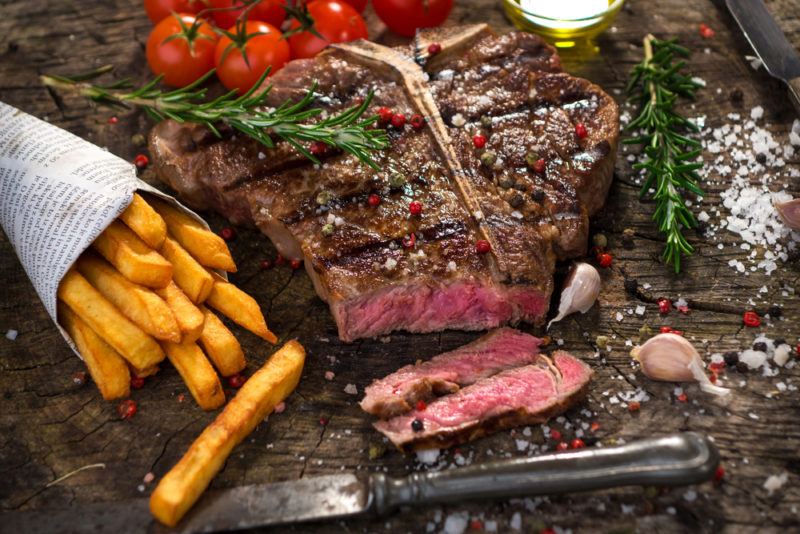
Taken from the short loin steak, the T-Bone steak is a unique type of steak that has a t-shaped bone in the center of the cut as its defining characteristic. Because it’s taken from the rear end of the short loin steak, T-Bone steak has more tenderloin steak in it than other short loin cuts, which attributes to its popularity.
If you’re confused between a T-Bone and porterhouse, don’t worry – most people are too. In fact, many experts disagree on the difference between these two prized cuts, even though they come from the same part of the cow. As a general rule, you’re more or less safe to assume that T-Bone and porterhouse steak are one and the same unless you really want to be nitpicky.
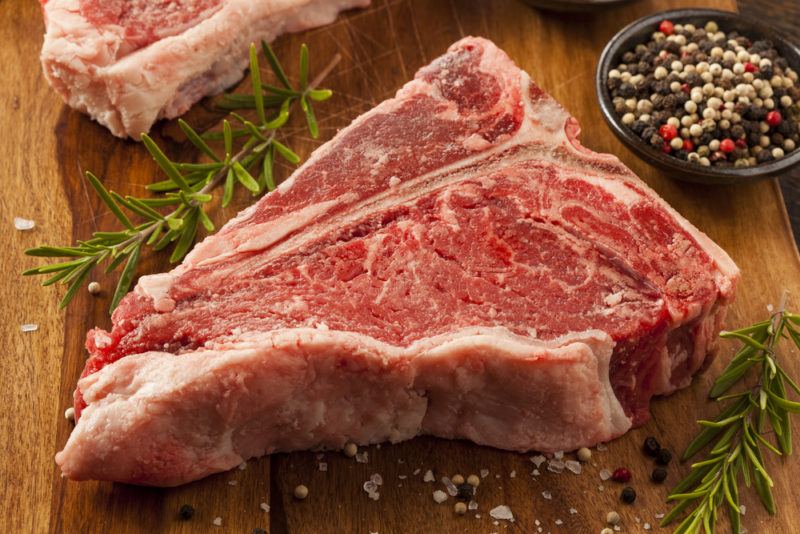
Don’t expect that you’ll be able to buy T-Bone off the market or at a restaurant for a humble price, though. As two of the most prized cuts of steak (tenderloin and short loin) are both found in T-Bone steak, it naturally is sold at a very high price in supermarkets, even more so when served in steakhouses.
It’s unlikely that you’ll be able to eat T-Bone steak on a regular basis unless you’re filthy rich. If you do get your hands on some T-Bone steak, though, then it’s recommended that you either grill or broil the steak for maximum flavor. The T-Bone’s bone is actually favorable in the cut for this reason, as heat is conducted through bone, cooking the steak more evenly than other cuts.
Tenderloin
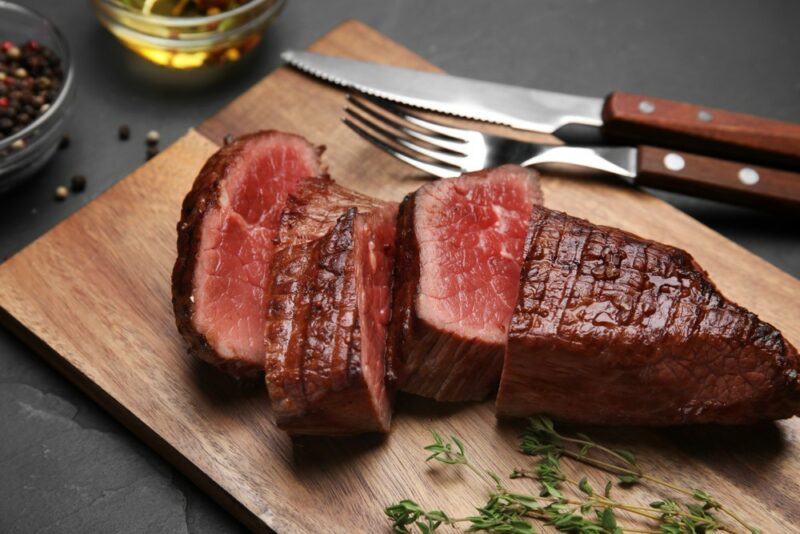
This list wouldn’t be complete without the obvious winner, the tenderloin steak. As the name suggests, this top-of-the-line steak has supreme tenderness as its defining characteristic. This cut of beef is one of if not the most prized cuts of beef and is a staple in many fine-dining restaurants all around the world.
Tenderloin a cut of muscle found near the kidneys and other sirloin steaks, meaning that the muscle is rarely used, which results in extraordinarily tender meat.
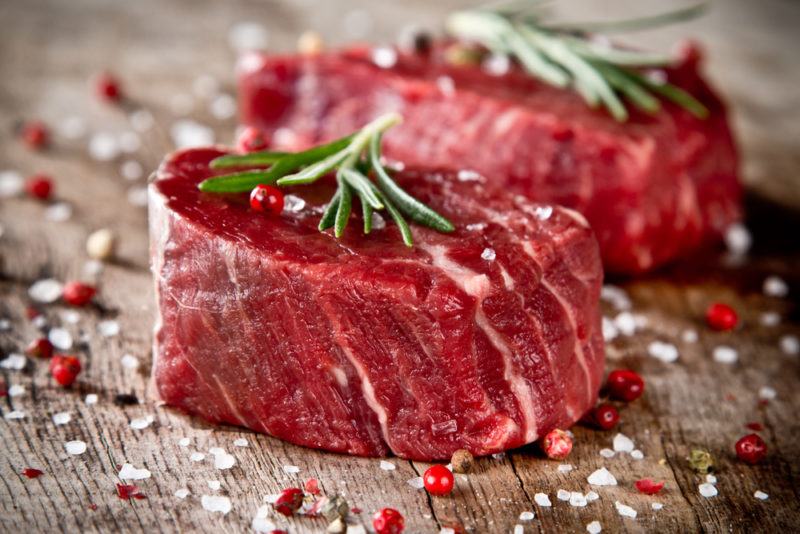
Tenderloin steak comes in many different forms. You can buy them unpeeled (where the steak still has the skin and fats attached to it) or peeled (with only the skin and without the fat). The most expensive form of tenderloin is PSMOs (read as “pismos”), an acronym that stands for “peeled, silver skin removed, and side muscle left on”.
Other than the presence or absence of skin and fat, tenderloin also comes in different cuts. The three cuts of tenderloin are the butt, center-cut, and tail cuts, which are used in a wide variety of premium dishes, such as carpaccio, beef Wellington, and beef stroganoff.
Filet Mignon
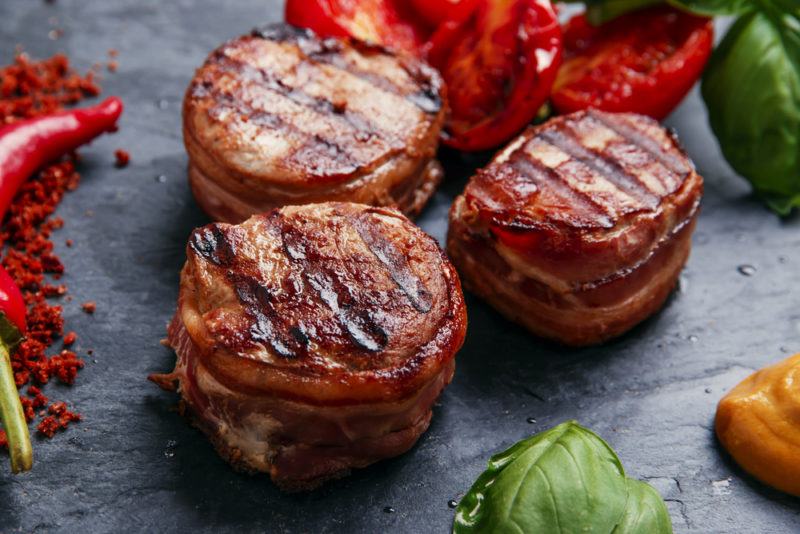
We can’t complete this list without also talking about filet mignon. This prized cut of steak is actually a part of the tenderloin, but it’s normally sold as a distinct cut.
The tenderloin is easily the most tender cut of steak. Unfortunately, it’s one of the most expensive cuts as well. That’s not surprising, as there’s a very small amount of filet mignon per animal.
Filet mignon can also be disappointing because, despite the high price tag, it isn’t a very flavorful cut of steak. Sometimes it’s better to go with one of the other cuts on this list, so you a more distinct flavor from your steak.
Secret Recommendation! Ribeye Cap
If you love tender steak, then there’s a secret cut of steak that you don’t hear about much, but you just have to try. It’s called the ribeye cap (there’s a couple other names too).
You may have noticed that ribeye itself didn’t make it to this list of tender steaks, despite being one of the most popular cuts (and one of my favorites). The truth is, ribeye is loved for its flavor and marbling, not tenderness.
However, the ribeye cap is basically where they carve the outside of the ribeye steak off, so you get the most tender and flavorful part of that particular steak. It’s hard to find, and very expensive, but worth it if you can find it (I get mind from Costco, when they have it).
When I buy it, it’s always wrapped with twine so it forms a ball-shape, similar to a filet mignon.
Conclusion
With all the different cuts available in the market, there’s an even greater selection of steaks to choose from. The different methods of cooking each cut make for a new tasting experience each time, so in theory, you’ll never get tired of beef.
With that being said, some beef steaks are just a “cut” above the rest in terms of certain factors. And with tenderness being the most universally accepted standard, tenderloin steak reigns supreme as one of the best cuts of steak. The other cuts are plenty tasty on their own, though.
How To Make Steak Tender
Tender cuts of steak are amazing. They also tend to be expensive.
If you can’t afford one of these cuts, why not buy inexpensive steak and make it tender instead? The following techniques can help with this goal.
Use A Meat Mallet
A meat mallet gives you the chance to manually tenderize meat. You’ll often be placing the meat between wax paper and pounding on it with the mallet.
You can use other tools, like a rolling pin. However, a meat mallet is your best option, as it has a spiky side that helps to cut the fiber in the meat much more effectively.
Scoring
Scoring simply involves making shallow slits on the surface of your meat. Doing so cuts through some of the longer fibers and makes the meat more tender.
Scoring isn’t incredibly powerful on its own, but you can easily combine it with one of the other approaches on this list to create very tender steak.
Marinate It
Marinades are fantastic for tenderizing meat. They also add plenty of extra flavor and make your meal taste much better.
Marinades work because they have an acidic component. This is often in the form of vinegar, but you’ll also find dairy-based and citrus-based marinades that work well too.
Don’t worry, the marinade isn’t going to ruin your meat. It’s likely to make everything taste much better instead.
Just be sure not to over-marinate your meat. Most of the time you’ll only need to marinate it for half an hour or so. You could try longer, like a few hours or even overnight, but try not to go beyond that. Excessive marination tends to ruin the texture of the meat (and doesn’t make it much more tender anyway).
Use Slow Cooking Techniques
A slow cooker or sous vide device allows you to cook your steak slowly for an extended time. Doing so gently breaks down connective tissue, giving you meat that’s much more tender. Slow cooking is fantastic if you’re busy anyway. The approach allows you to do most of the work beforehand, rather than spending an hour or more in the kitchen at the end of a busy work day.

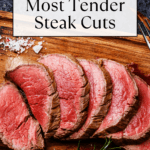
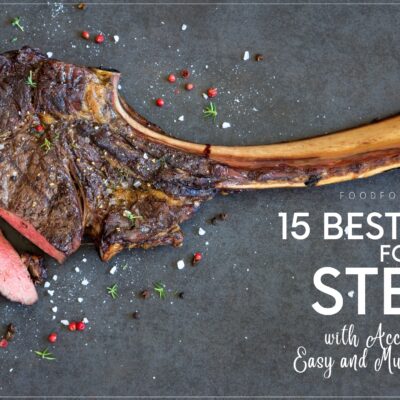
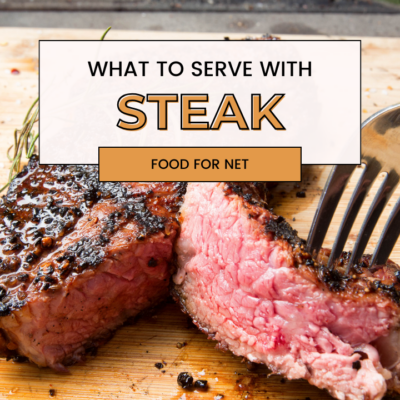
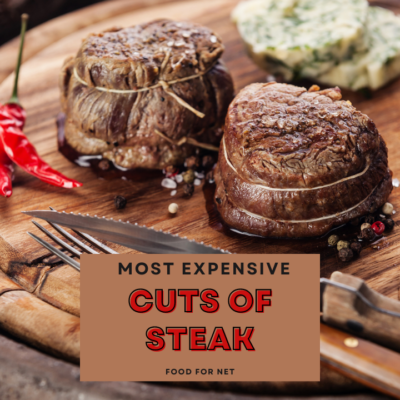
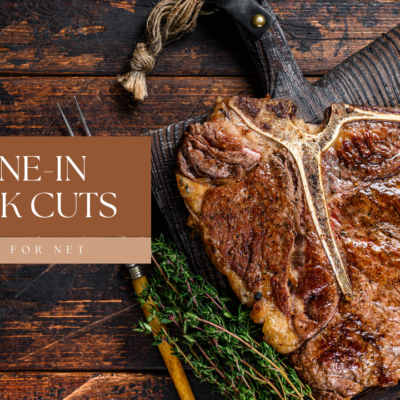


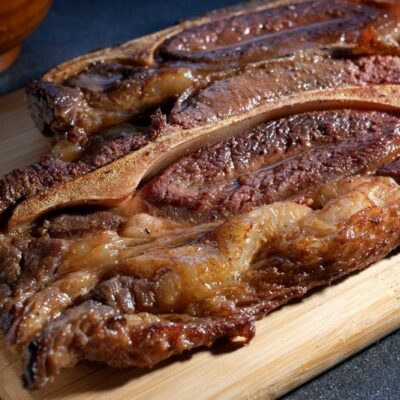
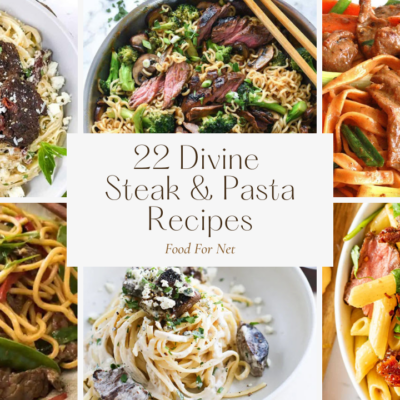
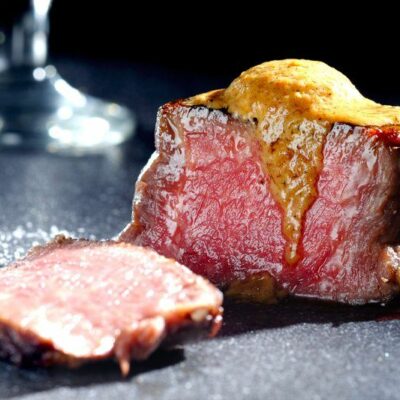
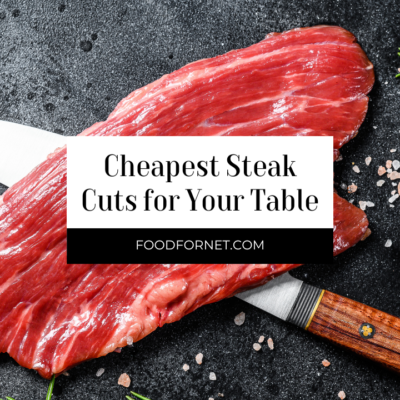
 Maja Blanca Recipe
Maja Blanca Recipe
As a new home cook, thank you for this informative information
I side with your wife on this one! I’m the only one I know that doesn’t like steak in my family!. I only eat maybe 2-4 bites of the most tender parts and that’s it.
I’m right there with i dont like steak either
I am the exact same way My husband doesn’t get it. I’m just not a steak lover. A couple of bites and I’m done. It also has to be extremely tender because I get tired of chewing. Give me chicken or ribs instead.
I live in Alberta and what you call the king of all steaks is super cheap in Alberta and we have in my opinion the best steak in the world. Top Sirloin has one of the better flavours and everything here as you might know is tender. Sirloin Tip is tender tri tip is tender Having the best steak in the world locally means the other cuts become a little more tender. Ex in Nova Scotia I bought a sirloin tip and it was as tough as anything not worth buying however hear I can buy a sirloin tip and it is not as tender as top but definitely good for the grill. I find the top pretty close to the striploin. Super tender if when at Costco you look for the specific piece.
I’m the only one in my family that doesn’t like steak. If I eat it, it has to be the small part of the t-bone or rib eye
For flavor I have always loved the sirloin steak. Although not always the most tender of steaks . It to me is the most flavorful, next to a porterhouse. Let it set out under a glass bowl for a couple of hours , this lets it get to room temperature and begins to break down the toughness.
Not liking meat nor eating much of it, I did find this article very informative. Thank you.
when I next buy for my husband, I’ll
know what to look for.
I would like to have you try a denver steak. It is very tender and hold lots of meat flavor. It is a little hard to find, but please try it and then give your opinion. I would really love to hear your take on it. Salt/pepper, and ground sage. 3/4 thick, grilled on high 7 mins on each side.
The way I love to eat Sirloin steak is to grind it up to make hamburgers. The Sirloin flavor comes through, but the meat is tender.
Fillets and Ribeyes for me